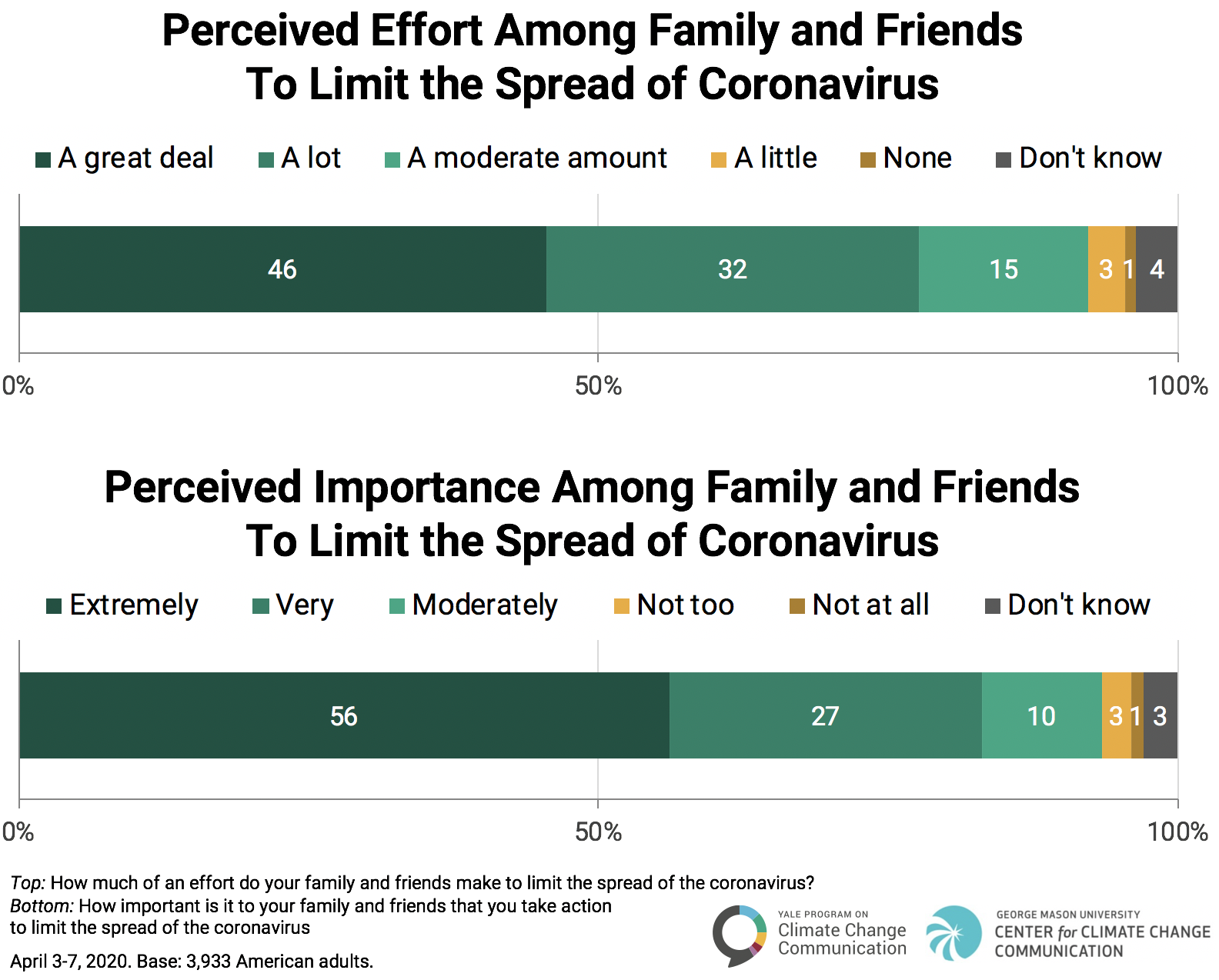Report · Apr 17, 2020
American Public Responses to COVID-19 – April 2020
By Matthew Ballew, Parrish Bergquist, Matthew Goldberg, Abel Gustafson, John Kotcher, Jennifer Marlon, Seth Rosenthal, Edward Maibach and Anthony Leiserowitz
Filed under: Messaging
5. Social Norms
5.1. Perceived effort and importance among family and friends to limit the spread of coronavirus.
Social science research has shown that two types of social norms can have a powerful influence on people’s behavior: descriptive norms – the belief that friends and family are themselves behaving in a given way; and injunctive norms – the belief that friends and family expect you to behave that way.Ballew, M. T., Goldberg, M. H., Rosenthal, S. A., Cutler, M. J., & Leiserowitz, A. (2019). Climate change activism among Latino and White Americans. Frontiers in Communication, 3(58), 1-15. doi: 10.3389/fcomm.2018.00058,Cialdini, R. B. (2003). Crafting normative messages to protect the environment. Current Directions in Psychological Science, 12(4), 105-109. doi: 10.1111/1467-8721.01242,Doherty, K. L., & Webler, T. N. (2016). Social norms and efficacy beliefs drive the Alarmed segment’s public-sphere climate actions. Nature Climate Change, 6, 879-884. doi: 10.1038/nclimate3025,Schultz, P. W., Nolan, J. M., Cialdini, R. B., Goldstein, N. J., & Griskevicius, V. (2007). The constructive, destructive, and reconstructive power of social norms. Psychological Science, 18(5), 429-434. doi: 10.1111/j.1467-9280.2007.01917.x
Americans perceive strong social norms about taking action to limit the spread of the coronavirus. About nine in ten Americans say their family and friends make either “a great deal of effort” (46%), “a lot of effort” (32%), or “a moderate amount of effort” (15%) to limit the spread of the coronavirus. Also, about nine in ten Americans say that it is either “extremely” (56%), “very” (27%), or “moderately” important (10%) to their family and friends that they take action to limit the spread of the coronavirus.
5.2. Perceptions of the percent of local community who are trying to limit the spread of the coronavirus.
Most Americans think a majority of adults in their local area are taking action to limit the spread of the coronavirus. More than half estimate that at least 70% of adults in their area are taking action.

